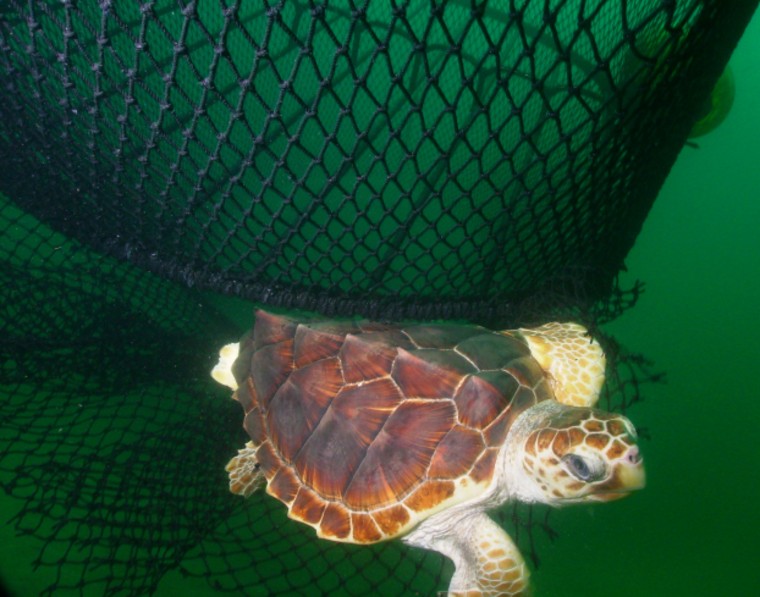The Obama administration on Wednesday recommended listing seven populations of loggerhead turtles as endangered — a decision that could have big implications for the fishing industry.
A leading turtle protection group called the move long overdue, citing recent population declines.
"Overwhelming evidence points to accidental capture in fishing lines, hooks, nets and dredges as the main culprit in these declines," David Godfrey, director of the Caribbean Conservation Corporation, said in a statement.
The seven populations include Northwest Atlantic Loggerheads, which nest on beaches from North Carolina to Texas.
"Because it is the world's second largest remaining assemblage of loggerheads ... saving Northwest Atlantic loggerheads is critical to the global survival of this species," the group stated.
The slow-maturing loggerheads typically are more than 3 feet long and weigh about 250 pounds.
The listing was proposed by the National Oceanic and Atmospheric Administration and the U.S. Fish and Wildlife Service.
The seven populations are already listed as threatened, but moving them to endangered could trigger additional protections and requirements on fishermen to reduce accidental catches.
NOAA acknowledges that fishing is the biggest threat to sea turtles.
"The greatest cause of decline and the continuing primary threat to loggerhead turtle populations worldwide is incidental capture in fishing gear, primarily in longlines and gillnets, but also in trawls, traps and pots, and dredges," it said.
The proposal is open to public comment and could be in effect by summer 2011.
Godfrey's group wants the administration to impose year-round restrictions on certain fishing in the Gulf of Mexico and to require that commercial fishing nets include devices to let turtles escape.
It also wants coastal states and cities to better protect nests along beaches.
Florida accounts for more than 90 percent of loggerhead nesting in the U.S., the conservation group said, yet nesting "throughout Florida has declined by nearly 50 percent."
It also noted that a cold snap in January that temporarily stunned sea turtles turned up few loggerheads.
"Over 4,000 juvenile sea turtles were affected by prolonged freezing temperatures," it stated. "Unlike previous cold-stun events, when a near even mix of green turtles and loggerheads were impacted, almost all of the turtles found this year were green turtles. The absence of loggerheads among the massive number of turtles rescued raises concerns that juvenile loggerheads, as well as nesting adults, are in decline."
